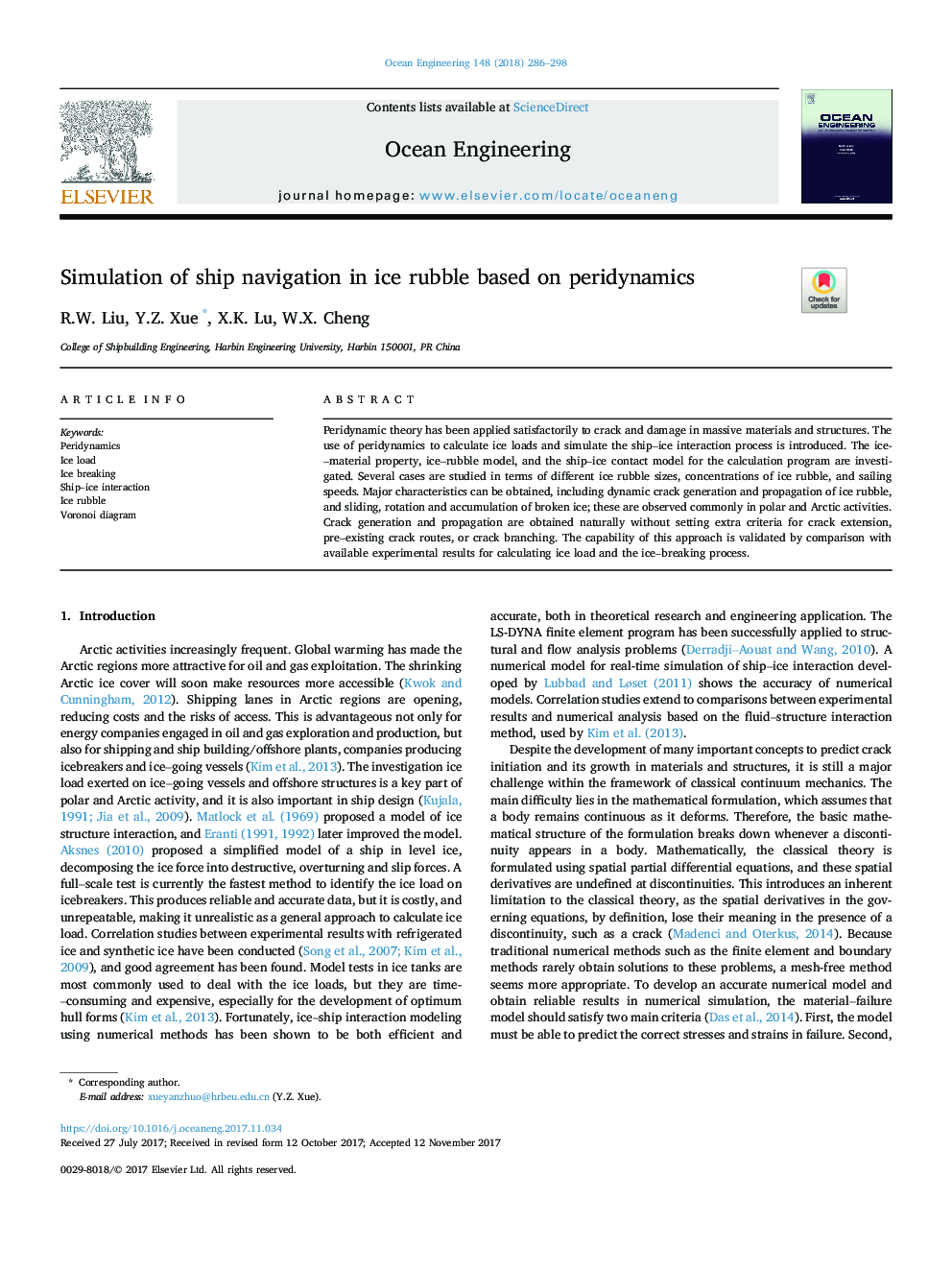| Article ID | Journal | Published Year | Pages | File Type |
|---|---|---|---|---|
| 8063584 | Ocean Engineering | 2018 | 13 Pages |
Abstract
Peridynamic theory has been applied satisfactorily to crack and damage in massive materials and structures. The use of peridynamics to calculate ice loads and simulate the ship-ice interaction process is introduced. The ice-material property, ice-rubble model, and the ship-ice contact model for the calculation program are investigated. Several cases are studied in terms of different ice rubble sizes, concentrations of ice rubble, and sailing speeds. Major characteristics can be obtained, including dynamic crack generation and propagation of ice rubble, and sliding, rotation and accumulation of broken ice; these are observed commonly in polar and Arctic activities. Crack generation and propagation are obtained naturally without setting extra criteria for crack extension, pre-existing crack routes, or crack branching. The capability of this approach is validated by comparison with available experimental results for calculating ice load and the ice-breaking process.
Related Topics
Physical Sciences and Engineering
Engineering
Ocean Engineering
Authors
R.W. Liu, Y.Z. Xue, X.K. Lu, W.X. Cheng,
